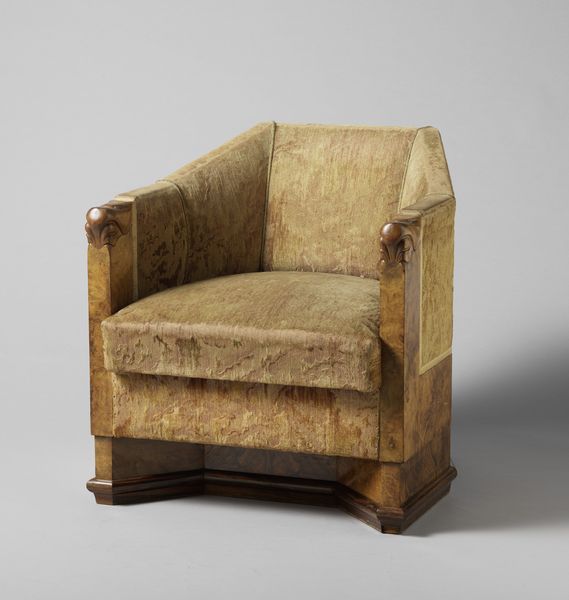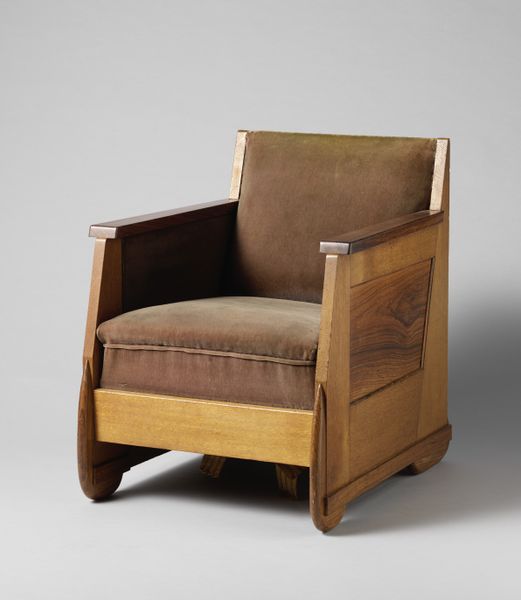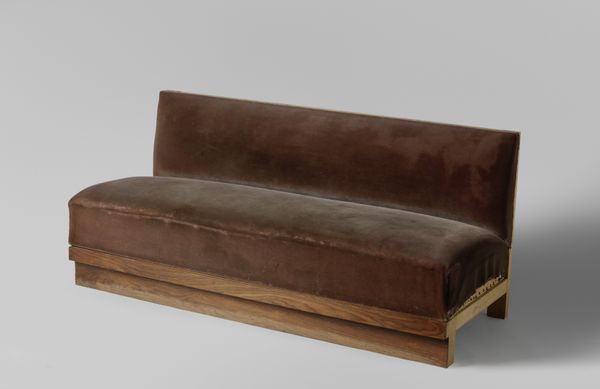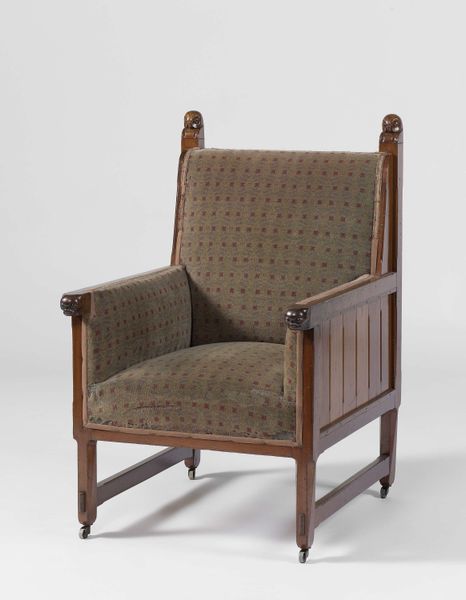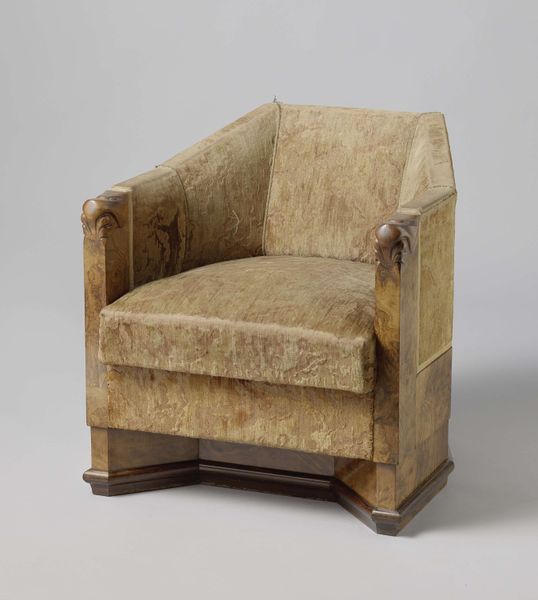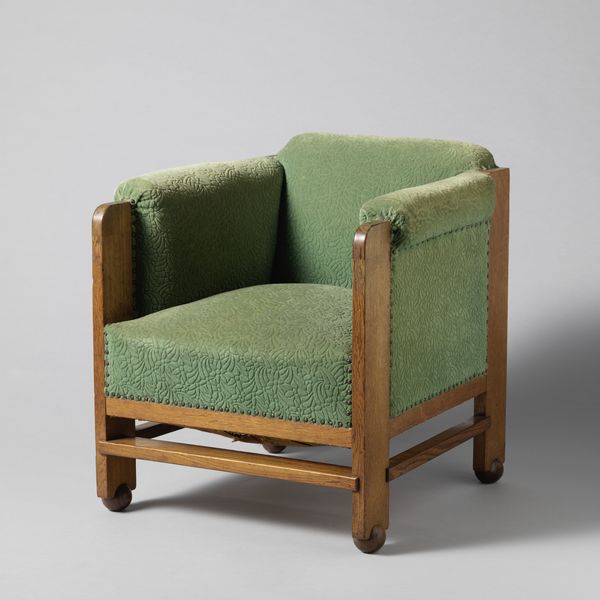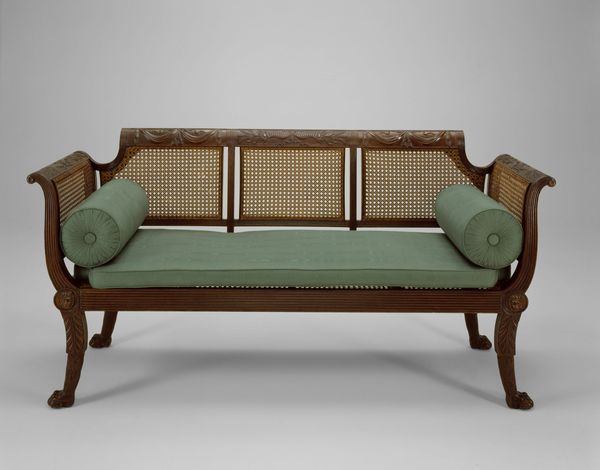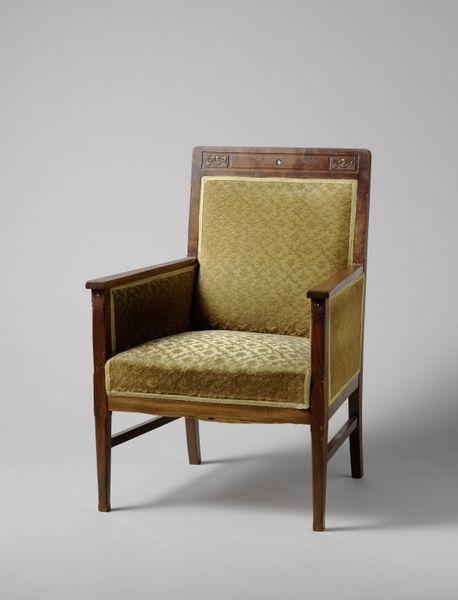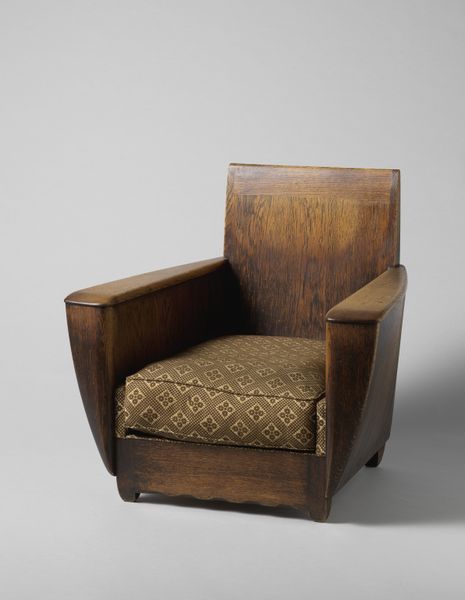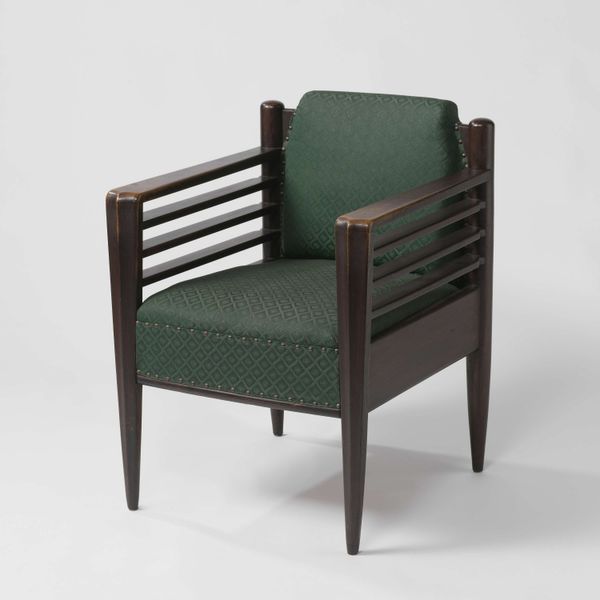
Bank bekleed met paars fluweel met verticale langgerekte abstracte motieven c. 1900 - 1905
0:00
0:00
textile, wood
#
arts-&-crafts-movement
#
furniture
#
textile
#
wood
#
decorative-art
Dimensions: height 152.0 cm, width 98.0 cm, depth 68.0 cm, weight 51 kg
Copyright: Rijks Museum: Open Domain
Curator: Immediately, I’m struck by its imposing stillness. It appears profoundly isolated, monumental even. Editor: Here we have a wooden bench upholstered in what's described as purple velvet, crafted around 1900 to 1905 by Karel Petrus Cornelis de Bazel. Its formal title translates to "Bench covered with purple velvet with vertical elongated abstract motifs." Curator: Elongated abstract motifs... interesting. Visually, the verticality adds a rigidity, despite the implied comfort of velvet. The color, though… is it *really* purple? It presents rather… muddy. Editor: The textile medium suggests a move away from purely functional objects, entering the realm of decorative art strongly tied to the Arts and Crafts movement. It challenged industrial production through handmade excellence celebrating artistic expression and design integrity. Curator: Yes, but those upright pillars that form the frame– they give it such structural austerity! Consider how their unyielding geometry clashes rather deliberately with those, admittedly restrained, curvilinear carvings near the top of the bench. It feels almost contradictory. Editor: Let's consider context: furniture design from this era provided the backdrop for developing discourses surrounding gender and domesticity. Who were the users of this piece? And within what social spheres was leisure performed or displayed? Curator: You raise interesting points! What is apparent, though, is the way light behaves across the piece. Observe, if you will, the remarkable interplay between the matte wood supports and shimmering textile surfaces – creating subtly rich textural dynamics. Editor: These explorations surrounding design reveal late 19th and early 20th century notions around aesthetic, function, and gender identity, reflecting a rapidly changing society attempting to establish visual order. Curator: Ultimately, it feels heavier, visually, than its likely physical dimensions imply. A deliberate artistic choice, of course. Editor: I agree – a testament to a transformative era expressed through everyday objects, offering intimate glimpses into socio-cultural values.
Comments
No comments
Be the first to comment and join the conversation on the ultimate creative platform.
